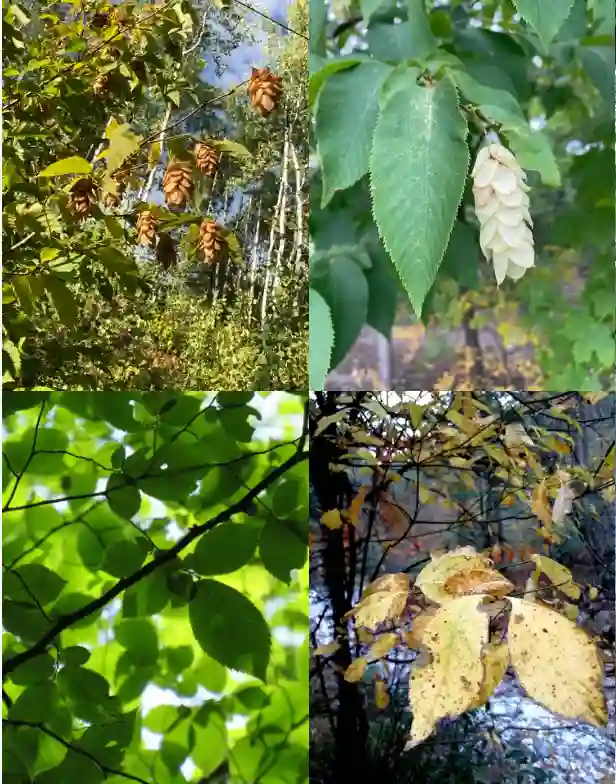Nepenthes Campanulata: A Rare and Enchanting Carnivorous Pitcher Plant
Hello, fellow plant enthusiasts! I’m Ferb Vu, and today we delve into the fascinating world of the Nepenthes Campanulata. This rare and captivating carnivorous pitcher plant has stolen the hearts of collectors worldwide.
Plant Family: Nepenthaceae – 207 Species in Genus Nepenthes
What is a Nepenthes Campanulata?
The Nepenthes Campanulata, also known as the Bell Pitcher, is a tropical pitcher plant native to the limestone cliffs of Gunung Mulu National Park in Sarawak, Borneo. Once thought extinct, it was rediscovered in 1997 by Ch’ien Lee. This epiphytic (grows on other plants) marvel boasts unique bell-shaped pitchers adorned with a vibrant yellow hue.
How is it Different from Other Pitcher Plants?
Compared to its carnivorous kin, the Nepenthes Campanulata stands out in several ways:
- Rarity: This plant has a much smaller natural habitat compared to others, making it a coveted collector’s item.
- Bell-Shaped Pitchers: Unlike the elongated tubes of many Nepenthes, the Campanulata features a distinctive bell shape, resembling a miniature golden cup.
- Epiphytic Nature: This beauty thrives clinging to rocks and trees, unlike terrestrial Nepenthes that grow in soil.
Is the Nepenthes Campanulata Difficult to Grow?
The Nepenthes Campanulata, while undeniably captivating, presents a challenge for growers. It requires specific conditions to flourish:
- High Humidity: Aim for 70-80% humidity, mimicking its tropical origins. Terrariums are often ideal environments.
- Warm Temperatures: Maintain consistent temperatures between 70-85°F (21-29°C).
- Bright, Indirect Light: Provide ample indirect sunlight; avoid harsh, direct rays that can scorch the leaves.
- Watering: Use distilled or rainwater to avoid mineral build-up. Keep the potting media consistently moist, but not soggy.
- Potting Media: Opt for a well-aerating mix like sphagnum moss, orchid bark, and perlite.
What are the Common Issues with Growing Nepenthes Campanulata?
Here are some potential hurdles you might encounter:
- Low Humidity: Dry air can cause the pitchers to shrivel and the plant to struggle. Invest in a humidifier or create a closed terrarium environment.
- Improper Watering: Overwatering can lead to root rot, while underwatering can dehydrate the plant. Learn to maintain the right moisture balance.
- Nutrient Deficiency: Consider using a weak, carnivorous plant-specific fertilizer occasionally to provide necessary nutrients.
How Do I Care for the Pitchers?
The mesmerizing pitchers are the hallmark of the Nepenthes Campanulata. However, they require minimal intervention:
- Avoid Filling the Pitchers: The plant naturally secretes digestive fluids to capture prey. Adding water can dilute these enzymes.
- Dead Insects: If you find dead insects inside, remove them gently to prevent rotting and potential bacterial growth.
Where Can I Find a Nepenthes Campanulata?
Due to its rarity, acquiring a Nepenthes Campanulata can be challenging. Here are some possibilities:
- Specialized Carnivorous Plant Nurseries: These nurseries often cater to enthusiasts and might have limited stock.
- Online Marketplaces: Reputable online sellers specializing in rare plants might list this beauty occasionally. Exercise caution and research the seller’s reputation.
Is Nepenthes Campanulata Fast Growing?
No, the Nepenthes Campanulata is considered a slow-growing plant. Don’t expect rapid bursts of new growth.
Does Nepenthes Campanulata Produce Shoots?
Yes, the Nepenthes Campanulata can produce shoots (runners) that can be used for propagation. However, this process takes time and requires specific techniques.
Can Nepenthes Campanulata Tolerate Any Temperature Fluctuations?
While the ideal temperature range is 70-85°F (21-29°C), the Nepenthes Campanulata can tolerate slight fluctuations. Avoid drastic temperature swings, especially prolonged periods outside the ideal range.
What are the Signs of a Healthy Nepenthes Campanulata?
- Vibrant green leaves
- Upright and firm pitchers with a waxy sheen
- Consistent production of new pitchers
- Healthy growth of runners (if present)
What are the Signs of an Unhealthy Nepenthes Campanulata?
- Brown or yellowing leaves
- Wilted or shriveled pitchers
- Lack of new pitcher production
- Stunted growth
Can Nepenthes Campanulata Live Outdoors?
In some very specific climates with consistently high humidity and warm temperatures, it might be possible to grow Nepenthes Campanulata outdoors. However, for most regions, a controlled environment like a terrarium is recommended.
Are There Any Nepenthes Campanulata Hybrids?
Yes, there are a few known hybrids of Nepenthes Campanulata with other Nepenthes species. These hybrids may have slightly different characteristics than the purebred form.
Final Thoughts
The Nepenthes Campanulata is a captivating carnivorous plant that demands a dedicated touch. Its rarity, unique bell-shaped pitchers, and epiphytic nature make it a true conversation starter. With the right care and environment, you can cultivate this botanical wonder and witness its captivating carnivorous ways.
Remember, patience and meticulous attention are key to successfully growing this exquisite plant. Happy planting!
If i die, water my plants!



